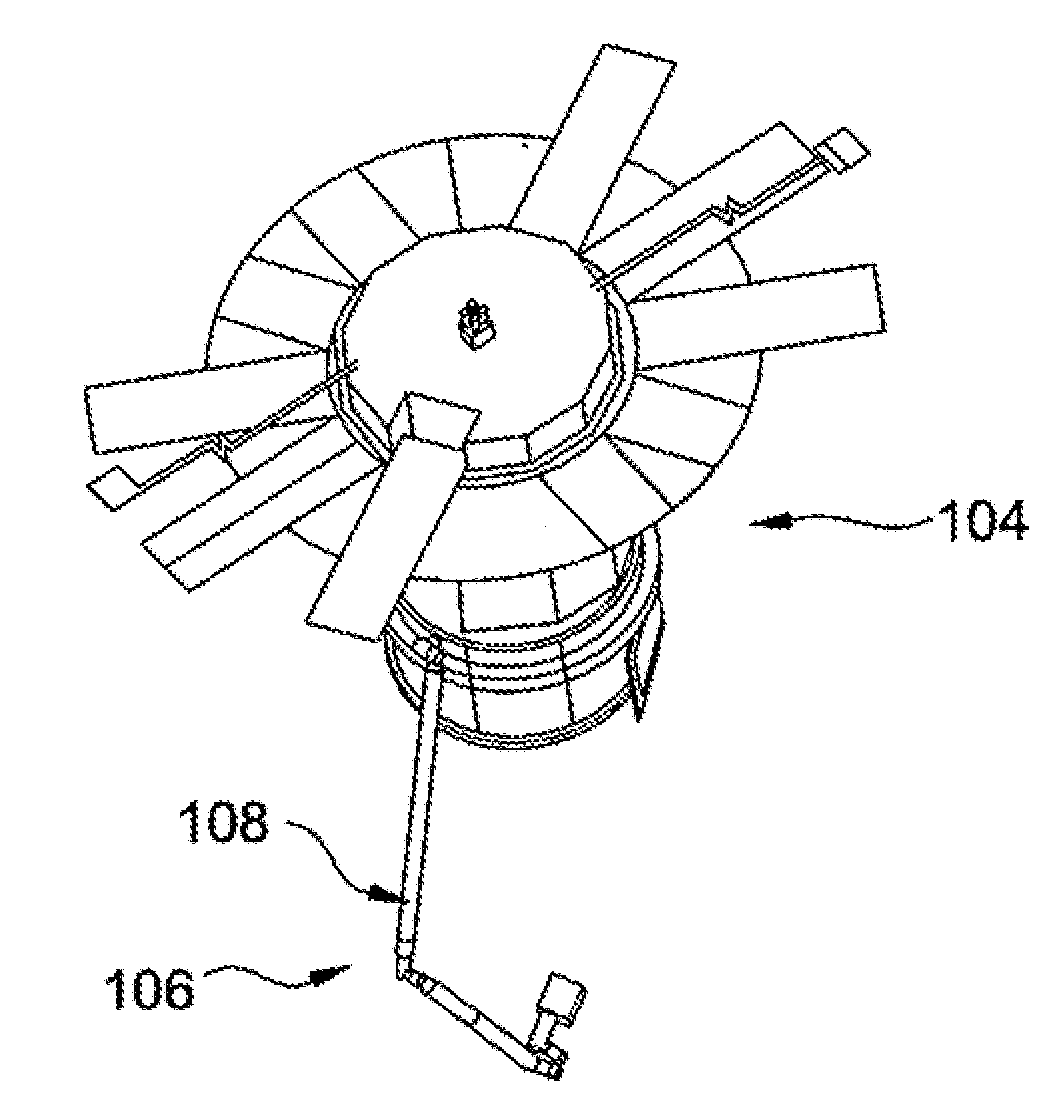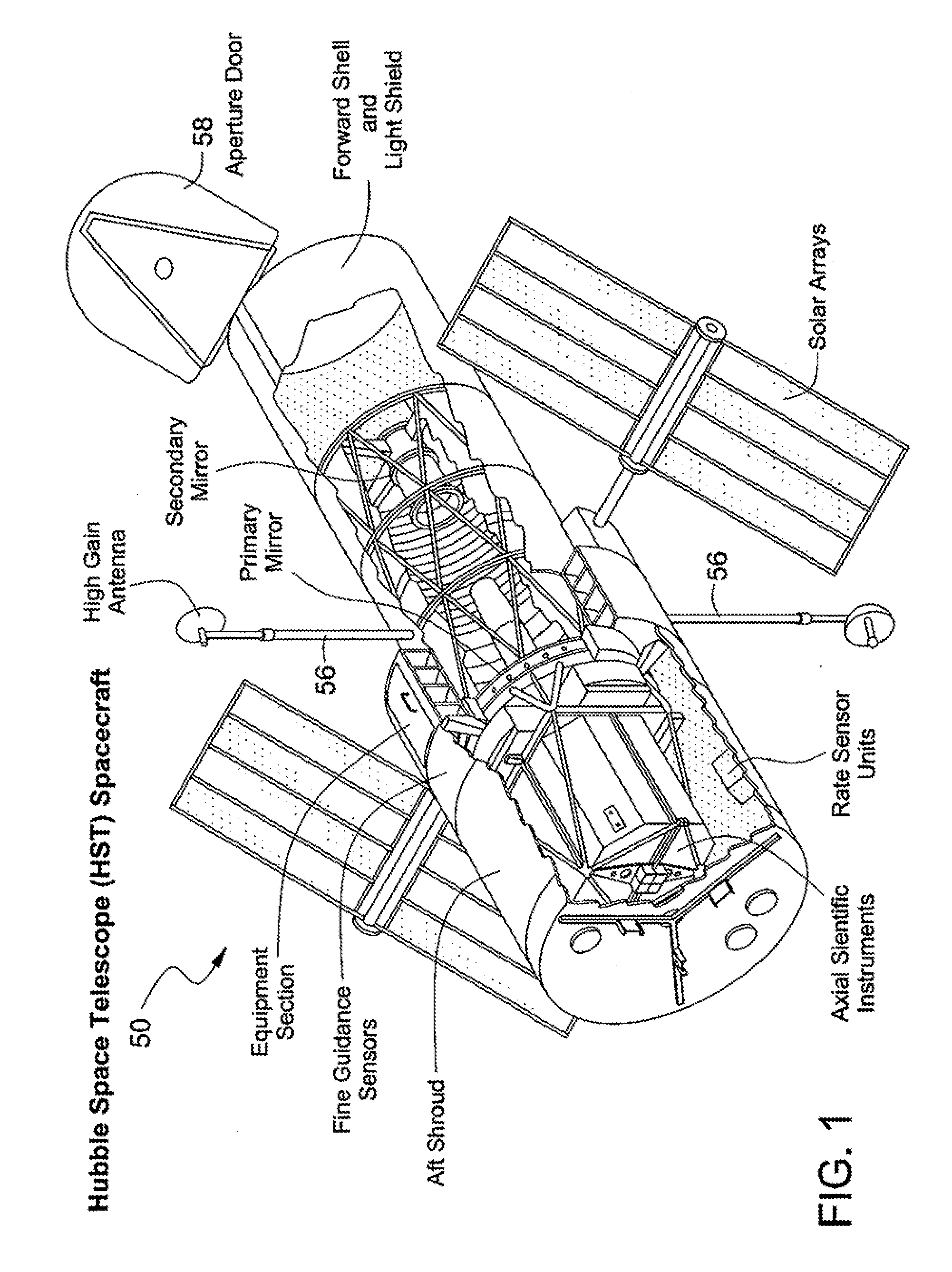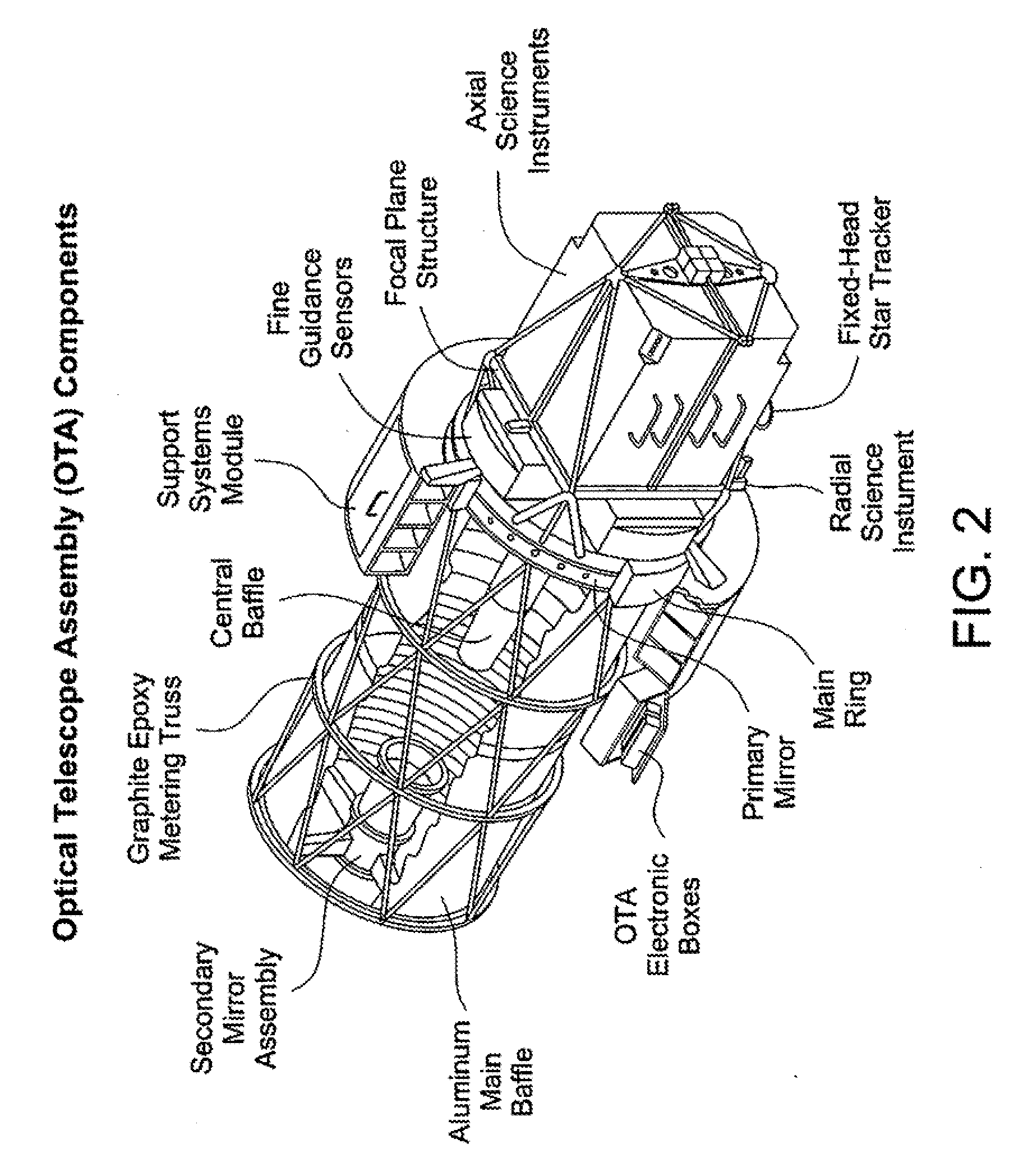Method and Associated Apparatus for Capturing, Servicing and De-Orbiting Earth Satellites Using Robotics
- Summary
- Abstract
- Description
- Claims
- Application Information
AI Technical Summary
Benefits of technology
Problems solved by technology
Method used
Image
Examples
Embodiment Construction
[0085] Reference is now made to the drawings, in which like numbers are used to designate like features throughout. Some of the preferred objectives of this invention are to robotically service a target satellite, such as the Hubble Space Telescope (HST) 50, and then provide HST 50 with a de-orbit capability, which will be used upon the completion of the HST mission life. While this specification is describing the invention as it relates to HST 50 as an example, one skilled in the art will recognize that the methods and apparatus disclosed herein are given only as exemplary embodiments. Other embodiments exist that fit within the scope of the invention as defined by the appended claims. Thus, for example, one skilled in the art will readily see that this invention has application to any number of existing free-flying satellites needing servicing and / or de-orbiting, and not just to HST 50.
[0086] One embodiment of this invention comprises the Robotic Vehicle (RV) 100, which preferabl...
PUM
 Login to View More
Login to View More Abstract
Description
Claims
Application Information
 Login to View More
Login to View More - R&D
- Intellectual Property
- Life Sciences
- Materials
- Tech Scout
- Unparalleled Data Quality
- Higher Quality Content
- 60% Fewer Hallucinations
Browse by: Latest US Patents, China's latest patents, Technical Efficacy Thesaurus, Application Domain, Technology Topic, Popular Technical Reports.
© 2025 PatSnap. All rights reserved.Legal|Privacy policy|Modern Slavery Act Transparency Statement|Sitemap|About US| Contact US: help@patsnap.com



